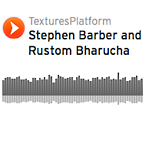
This essay is based on a paper the author presented during the Symposium
Dumb Type – The Birth of New Media Dramaturgy at Freie Universität Berlin in April 2013. It focuses on
Lovers (1994) – the first moving-image installation work of Teiji Furuhashi, viewed within the framework of the histories of immersive moving-image projection environments involving human figures in performative movement. Alongside
Lovers, it examines a film-projection experiment,
The Birth, shown at the Expo ’70 in Osaka involving the work of Tatsumi Hijikata. The final part of this essay extends back to 1893 to look at the originating event for all projections of moving-images within specially-designed, enclosed spatial environments: Eadweard Muybridge’s project to create the first-ever space for the projection of moving-images to public audiences, through the construction of his ‘Zoopraxographical Hall.’

 Stephen Barber has published many books on urban cultures in relation to performance, film, photography and digital art; his most recent book (2012) is on the personal archive of the moving-image pioneer Eadweard Muybridge.
The London Times called Barber’s books ‘brilliant, profound and provocative,’ and The Independent described him as a ‘writer of real distinction.’ The short video by Thomas Martius documents the work of Stephen Barber as a Fellow at the International Research Center “Interweaving Performance Cultures.” It provides insight into his extensive primary research into Muybridge’s personal archive. With the work of Eadweard Muybridge, Barber raises questions that reconceptualize the dynamics of corporeal and urban forms. His focus is on the conjunction of performance and film within exterior spaces, the origins of cinema, and its early prefiguring of the digital world. Thomas Martius’s short video is a dense insight into this researcher’s practice as well as an artistic reflection on the contemporary visual culture itself.
Stephen Barber has published many books on urban cultures in relation to performance, film, photography and digital art; his most recent book (2012) is on the personal archive of the moving-image pioneer Eadweard Muybridge.
The London Times called Barber’s books ‘brilliant, profound and provocative,’ and The Independent described him as a ‘writer of real distinction.’ The short video by Thomas Martius documents the work of Stephen Barber as a Fellow at the International Research Center “Interweaving Performance Cultures.” It provides insight into his extensive primary research into Muybridge’s personal archive. With the work of Eadweard Muybridge, Barber raises questions that reconceptualize the dynamics of corporeal and urban forms. His focus is on the conjunction of performance and film within exterior spaces, the origins of cinema, and its early prefiguring of the digital world. Thomas Martius’s short video is a dense insight into this researcher’s practice as well as an artistic reflection on the contemporary visual culture itself. 










